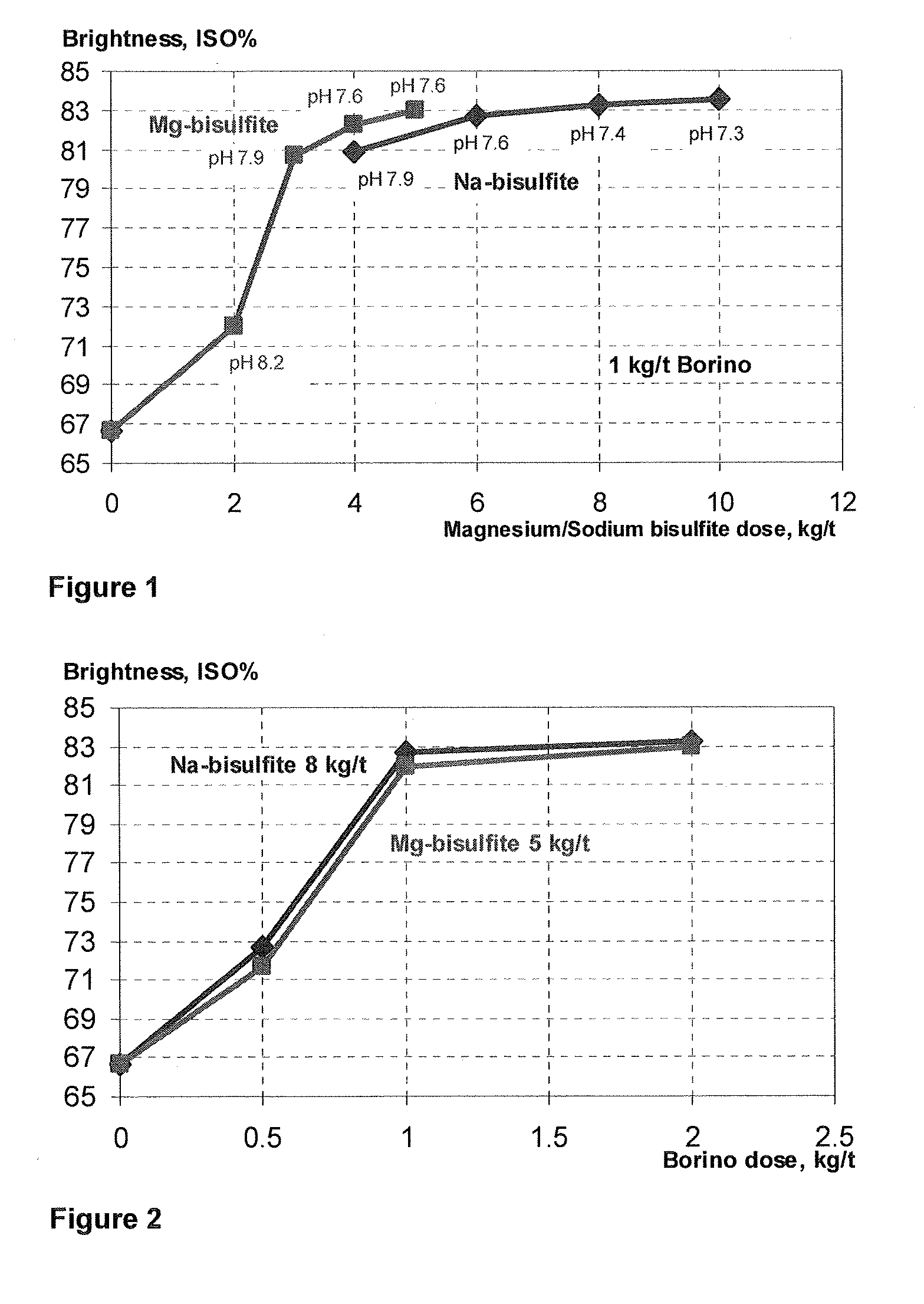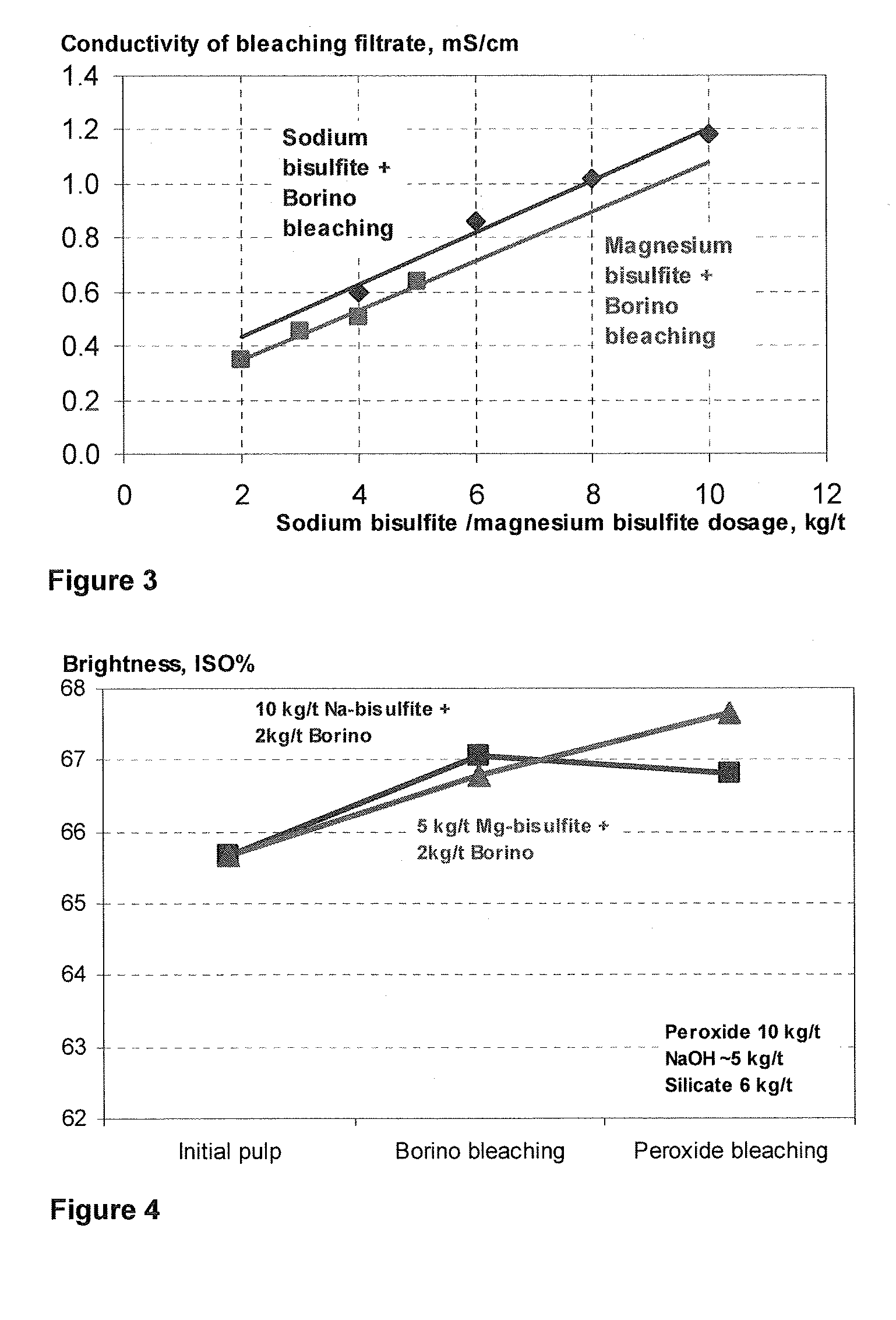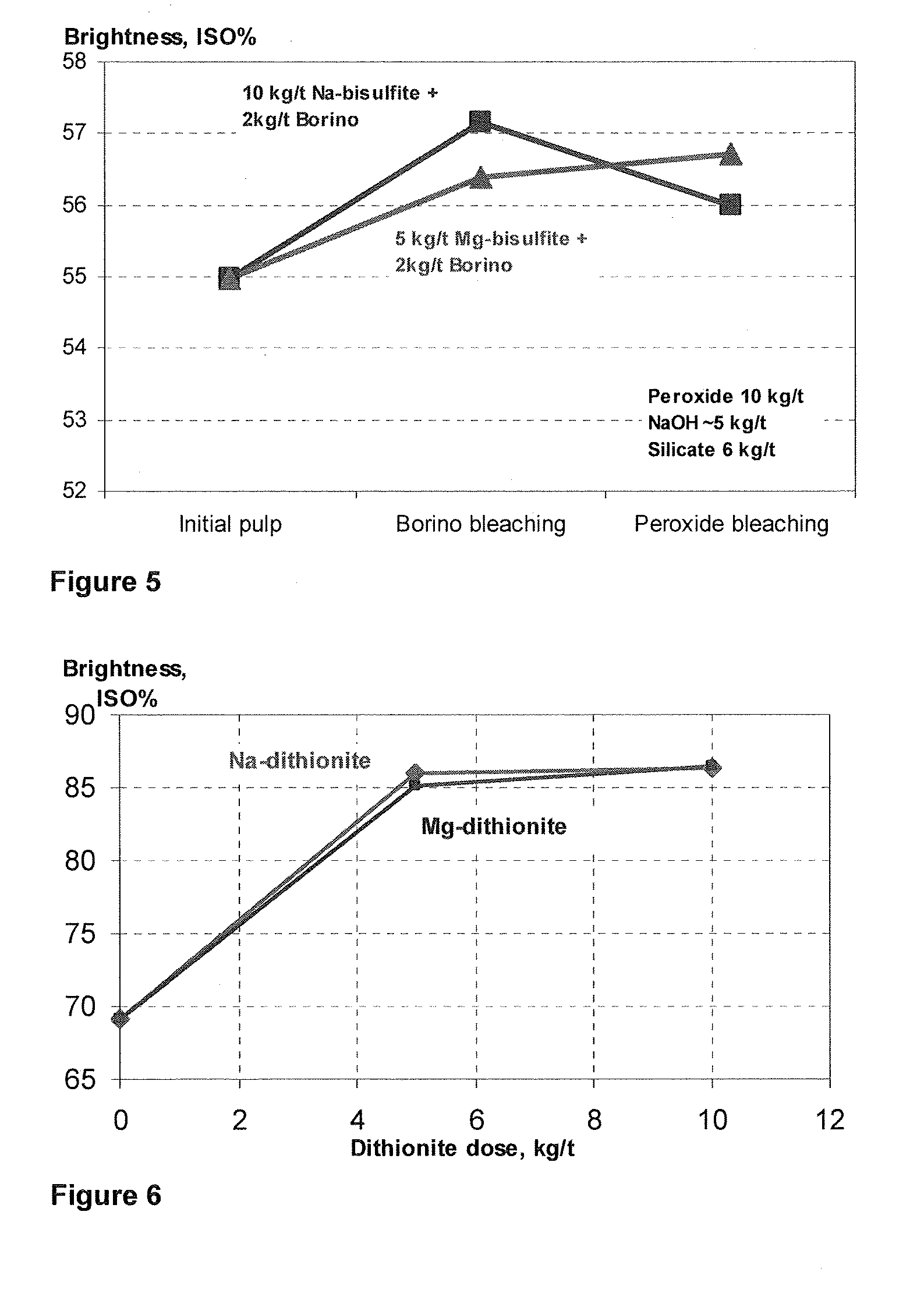Bleaching method
a bleaching method and bleaching technology, applied in the field of bleaching methods, can solve the problems of reducing the yield of the main reaction and flammability of the powder, and achieve the effects of improving the conductivity of the bleaching filtrate (ionic trash), reducing the conductivity of the bleaching filtrate, and improving the brightness
- Summary
- Abstract
- Description
- Claims
- Application Information
AI Technical Summary
Benefits of technology
Problems solved by technology
Method used
Image
Examples
example 1
[0045]408 grams (g) of 15% magnesium bisulfite solution (pH 2.8) was placed in a 500 milliliter (ml) beaker equipped with magnetic stirrer. The temperature of the solution was adjusted to 2° C. in an ice water bath. 3.1 g of sodium borohydride granules (99%) were added to the solution during 30 minutes. Final pH was 5.8 and temperature 10° C.
[0046]The magnesium dithionite concentration was determined to be 9.2% (theoretical 12.2%) giving a yield of 75%.
example 2
[0047]408 g of 15% magnesium bisulfite solution (pH 2.8) was placed in a 500 ml beaker equipped with magnetic stirrer. Temperature of the solution was adjusted to 2° C. in an ice water bath. 4.5 g of potassium borohydride (98.8%) was added to the solution during 30 minutes. Final pH was 6.4 and temperature 13° C.
[0048]The magnesium dithionite concentration was determined to be 10.0% (theoretical 12.1%) giving a yield of 83%.
example 3
[0049]408 g of 15% magnesium bisulfite solution (pH 2.8) was placed in a 500 ml beaker equipped with magnetic stirrer. Temperature of the solution was adjusted to 2° C. in an ice water bath. 14.6 g of sodium borohydride concentrate solution (21% SBH, 20% NaOH) was added to the solution during 30 minutes. When temperature started to rise, crushed ice was added to the solution in small portions (80 g in all). The final pH was 4.0 and temperature 7° C.
[0050]The magnesium dithionite concentration was determined to be 7.8% (theoretical 9.5%) giving a yield of 82%.
PUM
| Property | Measurement | Unit |
|---|---|---|
| pH | aaaaa | aaaaa |
| flammable | aaaaa | aaaaa |
| volume | aaaaa | aaaaa |
Abstract
Description
Claims
Application Information
 Login to View More
Login to View More - R&D
- Intellectual Property
- Life Sciences
- Materials
- Tech Scout
- Unparalleled Data Quality
- Higher Quality Content
- 60% Fewer Hallucinations
Browse by: Latest US Patents, China's latest patents, Technical Efficacy Thesaurus, Application Domain, Technology Topic, Popular Technical Reports.
© 2025 PatSnap. All rights reserved.Legal|Privacy policy|Modern Slavery Act Transparency Statement|Sitemap|About US| Contact US: help@patsnap.com



